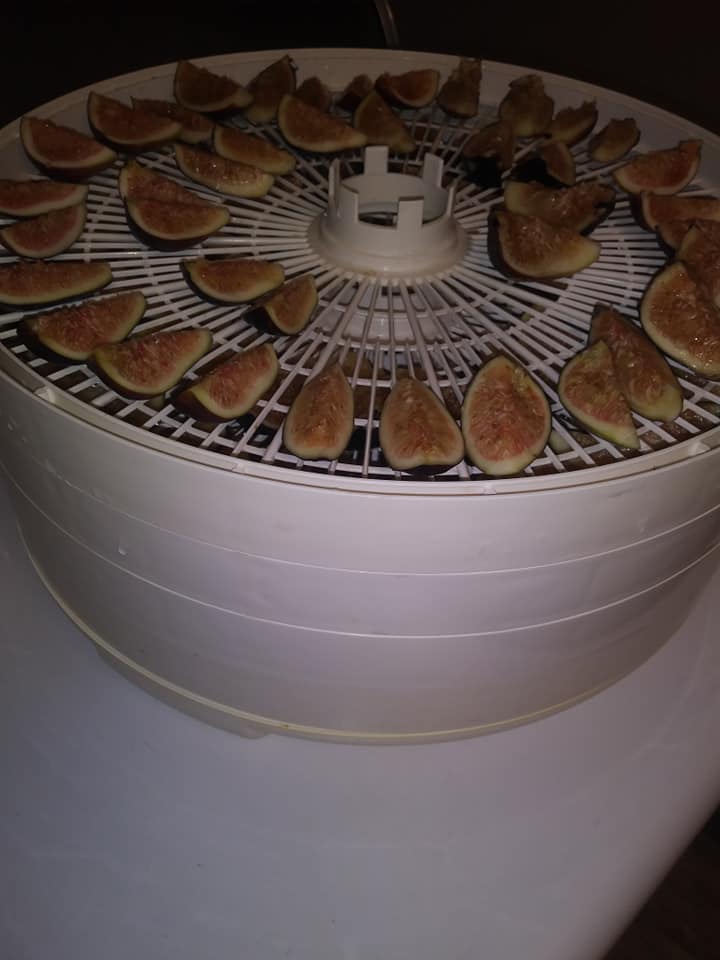Dehydrating fruit
When your fruit trees, grape vines, or berries produce a bumper crop, it is time to preserve the harvest. One of the easiest ways to preserve fruit is drying or dehydrating. Fruit can be cut into pieces and dried or made into tasty, child-pleasing fruit leather.
Drying methods
The easiest and most fool-proof way of drying fruit is with a dehydrator. Just prepare the fruit, place the pieces on the trays, and let it run at 135 degrees until it is dry, but still pliable. Most dehydrators come with a fruit leather tray, too. A great thing about dehydrators is you can set them in the garage or on the patio to keep the heat out of the house!
Fruit can be dried in the oven, too. Prepare fruit as you would for the dehydrator and place the pieces on cookie sheets. Cake racks placed in the cookie sheets will speed drying by allowing air flow around the fruit. If using cookie sheets without racks, turn the fruit half way through the drying time. The lowest setting for most ovens is 180 degrees, so the results are often not as good as with a dehydrator and running an oven for several hours does heat up the kitchen.
Sun drying is another option when the temperature is at least 85 degrees. Drying racks can be fashioned from screens made of stainless steel, Teflon-coated fiberglass or plastic. Do not use hardware cloth as it is made of galvanized metal that can oxidize and contaminate the food with cadmium or zinc. Set the screen on supports such as blocks or sawhorses in an area with full sun. Placing the drying racks on a concrete surface speeds drying. Avoid damp areas such as lawns. Place the fruit on the screen and cover with a second screen or cheesecloth to protect it from birds and insects. It can take several days to dry fruit by this method, so be prepared to bring it in if rain is expected!
Preparation
Select only fully ripe, unblemished fruit for drying. Less perfect fruit can be made into fruit leather. Wash the fruit and cut into even pieces. Only peel fruits with very thick skins or purchased fruit that has a wax coating. Keeping the peel intact preserves nutrients. Specific directions for various fruits are listed in the Preparing fruit for drying section below. Many other fruits (including melons) can be dried. Experiment with dehydrating the fruits you grow using this article as a starting point.
Apples, pears, peaches, bananas, and apricots tend to oxidize and turn brown when cut. Pre-treating with ascorbic acid can reduce oxidation and result in a more appealing result. Pre-treatment also increases shelf-life and helps retain nutrients. Ascorbic acid powder is available in most grocery stores and online. Follow the directions to make a solution with water then soak the cut fruit for 10 to 15 minutes (never more than an hour) before drying. Pineapple, lemon, lime, or orange juice can be used as a pre-treatment, but is not as effective as ascorbic acid in preventing browning.
Grapes, berries, cherries, and apricots are generally dried whole or halved. It is best to crack the peel of these fruits before drying to allow moisture to escape. For fruits you are leaving whole or pitting, there are two methods for cracking the peel.
1. Blanch in hot water (steaming, but not boiling) for 15 seconds to a minute depending on the size of the fruit and thickness of the skin. Blanche in small batches and plunge the fruit immediately into cold water.
2. Alternatively, cut small slits in the peels with a sharp knife.
For fruits you are cutting in half such as apricots, hold the half with your thumbs against the peel side. Press your thumbs into the fruit as you pull back on the edges, as if you were turning it inside out. Place the halves peel side down for dehydrating. If drying in the oven on cookie sheets, the cut side should be dried enough to not be sticky when it is time to turn halfway through the drying time.
Store dried fruit in freezer bags or sterilized, air-tight glass jars in a cool, dark place. Vacuum seal bags are excellent for storing dried fruit and extends storage life. If moisture condenses on the inside of the container, the fruit is not dry enough. Remove it from the container and resume drying, checking periodically.
Preparing fruit for drying
NOTE: All drying times are for a dehydrator. Since the low setting on ovens tends to be higher than 135 degrees, the drying time is generally less. Sun-drying times vary depending on temperature and humidity.
Apples and Pears – Peel if desired, core, and cut into even slices or rings. Treat with ascorbic acid solution or acidic fruit juice as described above. Drying time: Apples 4 – 10 hours; Pears 6 – 16 hours.
Apricots and Peaches – Cut in half, remove pits, and cut into even slices. Apricots may be left in halves and the skins cracked as described above. To remove peels, blanch for about 1 minute before slicing. Remove from hot water and dunk in cold water then slip the peel off the fruit. If leaving the peel intact, the fuzz may be rubbed off with a towel. Drying time: Apricots and Peaches 6 – 16 hours.
Bananas – Peel and cut into 1/4 inch slices. Treat with ascorbic acid solution or acidic fruit juice. Drying time: 6 – 16 hours.
Berries and Grapes – Crack skins by blanching or making small slits with a sharp knife. Halve strawberries. Smaller berries and grapes can be left whole. Drying time: Strawberries 6 – 12 hours; Other berries 10 – 18 hours.
Cherries – Remove stems and pit. Drain until juice stops flowing out. Drying time: 18 – 26 hours.
Figs – Remove stems and halve or quarter. Drying time: 8 – 15 hours.
Plums – Crack peels by blanching or making small slits with a sharp knife. Remove pits. Leave whole or cut in halves or quarters. Drying time: 8 – 16 hours.
Fruit leather
Fruit leather is easy to make. The fruit can be cooked before pureeing if desired or processed raw. Cooking concentrates the flavor by removing some of the water.
Wash and if needed, peel fruit and cut away any bruised parts. If cooking, place the cut fruit in a pan with 1/8 cup water or juice for each quart of fruit. Reduce the amount of water if fruit is very juicy. Especially juicy fruit such as strawberries may not need any water added. (If not cooking the fruit, skip to the next step.) If the fruit is too tart, add honey or corn syrup to taste (about 1 tablespoon per quart of fruit). Sugar tends to make fruit leather brittle, so is not the best choice for sweetening. Cover and cook over low heat stirring occasionally until fruit is soft. Allow the fruit to cool before proceeding.
Puree the cooked or raw fruit in a blender until very smooth. If using raw fruit, add honey or corn syrup to taste if desired (about 1 tablespoon per quart). If using raw fruit, add water or juice 1 tablespoon at a time, if needed, to achieve a smooth consistency.
If using a dehydrator, spray the fruit leather tray with cooking spray to prevent sticking. If using a cookie sheet, spray it with cooking spray or line it with parchment paper. Use a spatula to spread the puree in a smooth layer 1/4″ to 3/8″ thick. Dehydrate at 135 degrees (or the lowest setting on the oven) for 4 to 8 hours, checking periodically. The fruit leather should feel leathery and pliable with no sticky spots on the top or bottom. Remove while still warm. When cool cut into pieces, if desired. Separate pieces with wax paper or parchment paper. Store in a plastic containers or air-tight jars in a cool, dry place.

